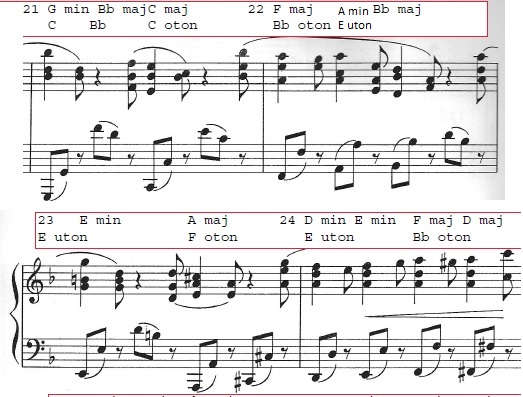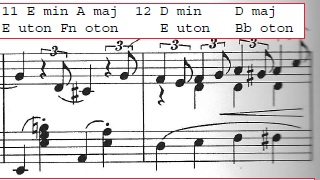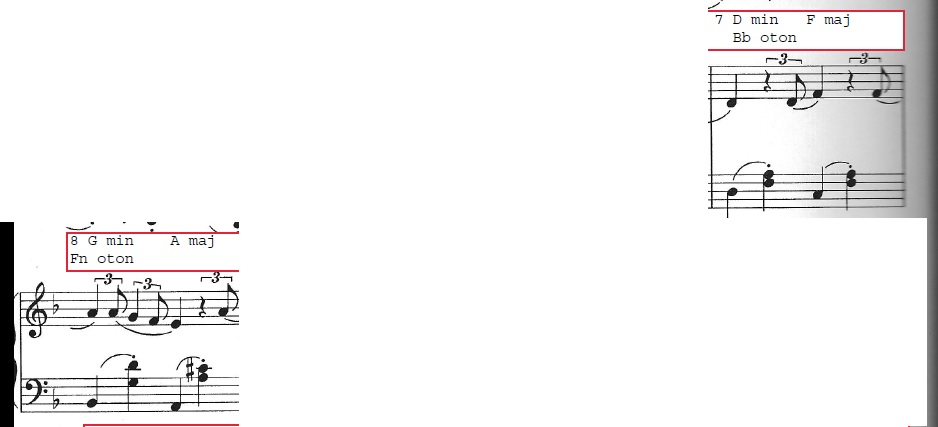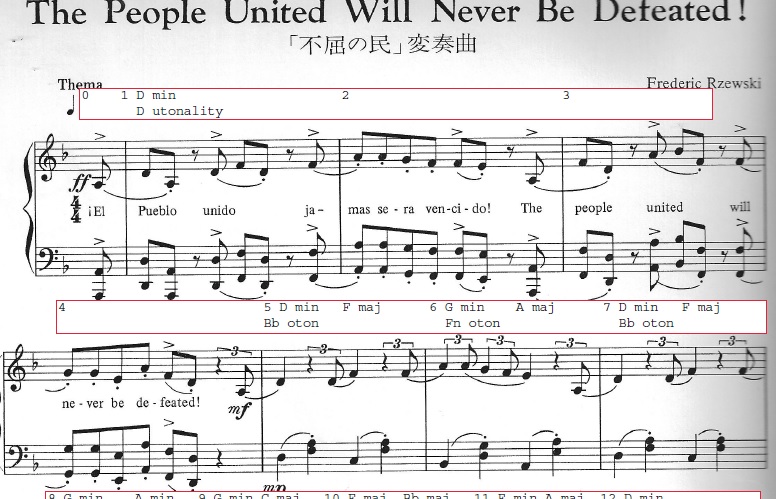This is variation #9 of People, composed by me. It is based on the harmonies of measures 21-24, which I play on scales derived from several different otonality and utonality scales. The following table shows the keys that are in the material for measures 21-24, followed by the scales from the 31-limit tonality diamond that fit the tuning best, followed by the six most important tones in those 16 note scales. For example, the first line says the key is E minor, derived from the 5:4 utonality 16 note scale. From those 16 notes, the most important are E, G, & B, and they are contrasted with another triad higher up the overtone (undertone in this case) series. I spent a lot of time with Scala and a keyboard to determine the most harmonious six notes to use, listening to the best, and discarding the rest.
variation #9 measures 21-24
key scales notes
e min E uton E G B D Gb A
D maj Bb oton D F+ A Db G+ B
d min E uton D F A E G B
C maj C oton C E G A# D F+
Bb maj Bb oton Bb D F G+ C Eb
A maj F oton A C# E C G D
g min C oton G Bb D F A C
F maj Bb oton F A C Eb G Bb
A min E uton A C E
Here are the four Scala tunings that I played with while composing.
- F oton 4:3 otonality
- C oton 1:1 otonality
- Bb oton 16:9 otonality
- E uton 5:4 utonality
And here is the original measures 21 – 24 as written by Rzewski.

or download here:
People var #9 – 28






